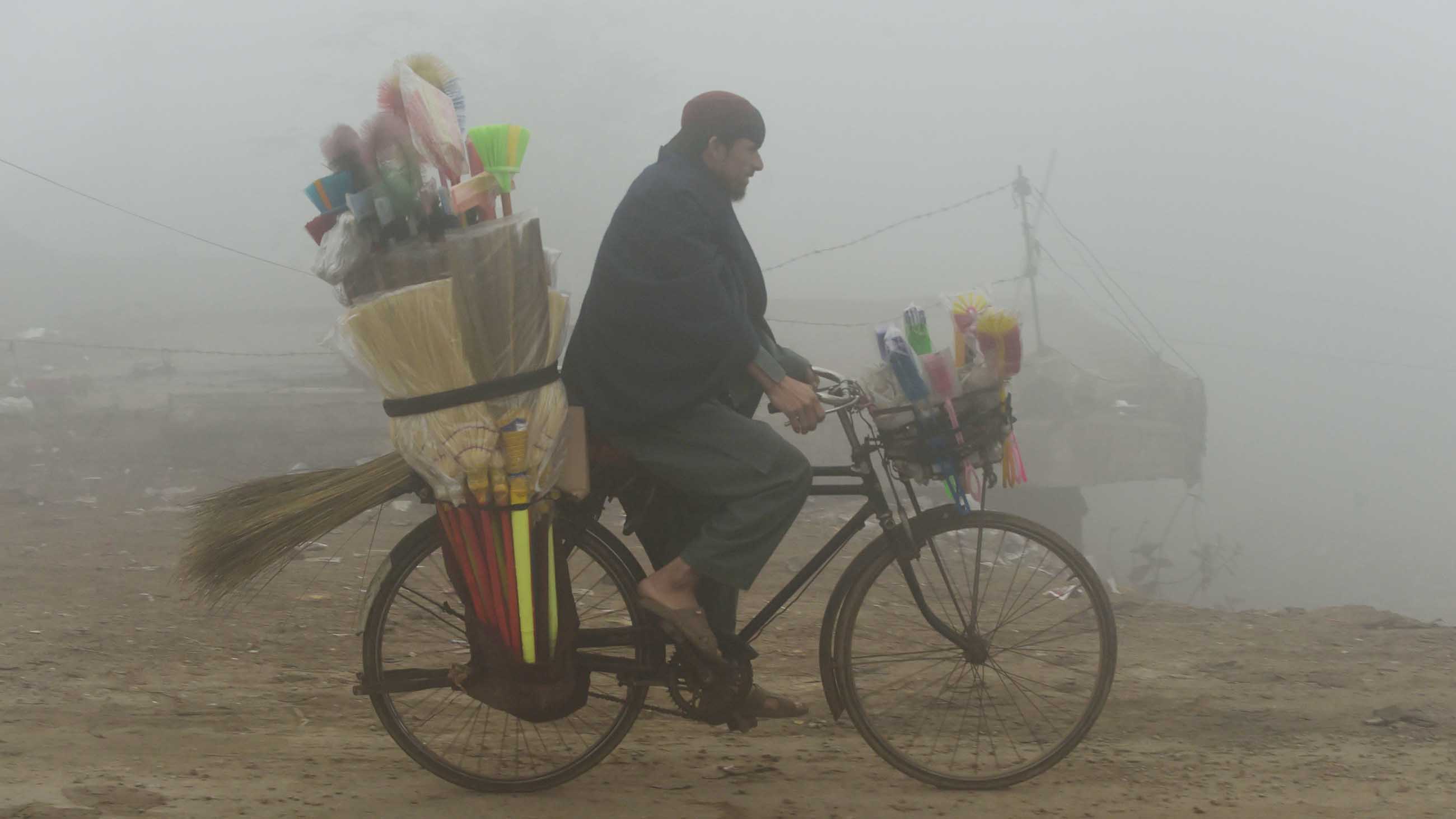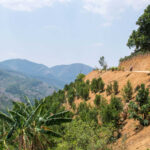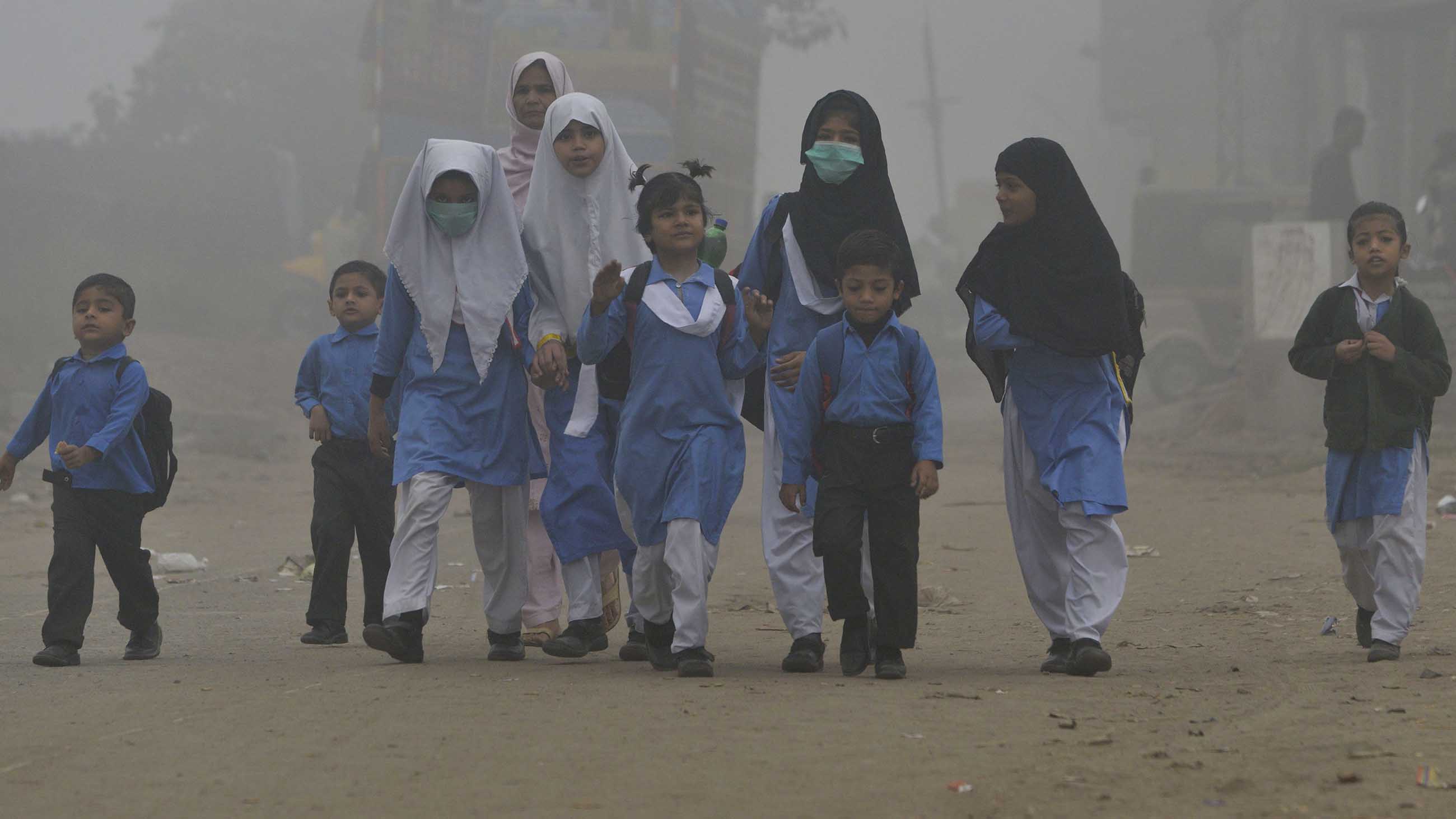As Residents of Lahore Choke on Air Pollution, Pakistani Officials Dawdle
When a thick haze began to envelope Lahore in early November, residents braced themselves for the return of the city’s annual smog season. Flights were cancelled and roads made treacherous by poor visibility, and Aisha Amir Ahmed watched with alarm as the numbers on her air quality app began climbing and her family grew ill. Her husband’s asthma and respiratory allergies were worsening, and by the time the smog peaked in November, their 11-year-old son had developed a chest infection. Ahmed, a school teacher, encouraged her students to obtain face masks and modified her lesson plans to include air pollution, even as respiratory ailments stopped some of her students from attending. “November was sheer hell for us,” she said. “I had been looking” at the climbing numbers “for a while and worrying, ‘What is it going to take for people to take action?”’
Situated on the plains of Punjab, Pakistan’s largest province by population, Lahore is a cultural and industrial hub surrounded by fertile cropland. Every winter, black plumes of smoke billow across the plains as millions of farmers incinerate their fields to clear the way for planting. Lahore’s industrial belt contains everything from brick kilns to pharmaceutical plants, which belch out toxic pollutants, while millions of low fuel-efficiency cars ply the congested roads. When ground temperatures cool in the winter months, layers of warm air settle above the city, creating a thermal inversion. Air circulation is limited by a lack of rising warm air, effectively trapping the city in a stagnant layer of air into which pollutants are continuously pumped. The effects of this dynamic reach their worst in October or November, when smog is layered so thick it inhibits visibility.
Even outside of Lahore’s wintertime smog season, the city’s 11 million inhabitants inhale high levels of PM 2.5 — particulate matter with a diameter of 2.5 micrometers or less that can enter the respiratory tract and lodge itself in the lung’s tiny air sacs, where it prevents gases from being exchanged. From there, the pollutants enter the bloodstream or remain trapped in the alveoli of the lungs, triggering emphysema, lung disease, stroke, heart disease, cancer, and even death.
Statistics vary, and global rankings are hard to compare, given widely different measurement protocols, but by almost any measure, Pakistan has some of the worst air quality in the world. On average, Pakistanis are exposed to PM 2.5 levels more than 6.5 times the level determined safe by the World Health Organization. As a result, Pakistanis lose 2.5 years on their life expectancy, and in 2012 approximately 60,000 Pakistanis died from air pollution, one of the highest death counts in the world. While all of the country’s major cities grapple with deteriorating air quality, in recent years Lahore’s pollution levels have exceeded those of Pakistan’s commercial capital, Karachi, and the official capital, Islamabad, rivaling the notoriously poor air of New Delhi and Beijing on its worst days.
Yet for citizens in Lahore, getting government agencies to respond to the crisis has proven an onerous battle. Last year, when the government failed to publicize its own pollution data, citizens set up independent monitors throughout the city to provide the information the government was failing to disclose. Meanwhile, lawyers demanded the government release reliable data and declare public health emergencies during the smog’s worst periods.
[wpgmza id=”3″]
The gravity of Lahore’s pollution crisis has not gone completely unacknowledged by the government. In October, a new smog policy was unveiled that included such measures as increased reliance on low-sulphur fuels, improving vehicular emissions, monitoring burning of waste, and creating woodlands. The plan also called for issuing public health advisories during days with particularly high smog levels.
Even so, the agencies responsible have generally minimized the crisis. A month after Lahore’s emergency plan was announced, when the smog season was at its peak in November, I met with Saif Anjum, secretary of the Environment Protection Department (EPD). In an office hidden away in the unlit halls of the EPD, Anjum was quick to point out that his department kicks into overdrive at this time of year, arresting farmers for burning crops, sealing countless factories, and washing roads of dust from construction projects. Anjum also hauled out a tranche of papers and told me the PM 2.5 levels – which he said exceeded 189 micrograms per cubic meter on the worst day (a number more than seven times the daily safe limit of 25 set by the WHO) – were not alarming. “These [numbers] do not really warrant a health emergency,” he said.
At the time, the government had not publicly released any data, leaving most citizens in the dark about the level of risk. Although the government had presented its plan in October, implementation was weak to nonexistent. At the nadir of Lahore’s smog crisis in November, a group of lawyers petitioned the Lahore High Court, demanding that government departments outline their specific actions to combat smog. In court, the EPD was forced to show its air quality data, but the figures the department provided were incomplete, with missing PM 2.5 values across November. On one particularly polluted November day, the court was told, the PM 2.5 levels exceeded 350 micrograms per cubic meter.
The court ordered the EPD to publish real-time air quality data on their website. Notably, the court also learned that although the EPD and health department had been meeting daily, the environment department had not shared air quality readings with the health department. Lawyers asked for a health emergency to be declared when PM 2.5 levels reached 300 micrograms per cubic meter, which would shorten work days, shut down schools and limit children’s outdoor activity. Despite this, no emergency has been declared.
Anjum told me he was convinced that a public health emergency would not work. “Of course health is very important,” he said. “At the same time, social and economic activity is also important – and rather more important.”
“We really don’t know at what level we should impose a health emergency,’’ he added. “Most probably our schools would remain shut for at least eight months.”
Other government officials disagree. “Economic development will be a far cry if we are not going to address these environmental issues,” said Zia ul Islam, the national ozone unit program manager for the Ministry of Climate Change. While economic development is a paramount concern to the federal and provincial governments, environmental stewardship — including air quality — has shifted to the provinces under the 18th constitutional amendment, and remains a matter of local politics.
Despite ul Islam’s warning, trading health for development is exactly what some experts say Lahore has done. Last year, as the city experienced its second consecutive year of intense winter smog, the country registered its highest economic growth in a decade. “The industrial model of development, which emphasizes short-term growth at the expense of human health and ecological sustainability, is a part of the problem,” says Tabitha Spence, a researcher at the Lahore School of Economics.
“Rapidly growing cities like Lahore are literally choking on this growth,” she adds.
Like the EPD, Lahore’s health officials have vacillated on the gravity of the issue. The Primary & Secondary Healthcare Department is one of the departments responsible for alerting the public about any health crisis from the city’s air quality. Dr. Asim Altaf, a wiry man in a black suit, informed me that his team had set up mandatory smog counters in public hospitals across the city. “There was no significant change in the data compared to previous years,” Altaf, the health department’s additional secretary, told me. Surprisingly, his team recorded a decrease in hospitalizations from smog-related illnesses.

Other health experts cast doubt on the idea that hospital intake numbers tell the full story. “The actual number of patients in November went down,’’ acknowledged Dr. Kamran Cheema, a pulmonologist in Lahore. “People stopped coming out, people stopped traveling, but the patients we saw were sicker.” Dr. Cheema added that patients with existing conditions, particularly asthma, were worse off. “We saw those patients get very sick, very fast,” he said. “Patients come to us once the symptoms have gone beyond the limit of their tolerance.”
Similarly, Dr. Hafiz Shahid Latif, head of environmental health at Lahore’s Institute of Public Health, reported a visible rise in the number and severity of respiratory ailments. “In my neighborhood, there are two general physicians’ clinics, and I witnessed a clear increase in patients reporting with cough, with flu-like feelings, with eye irritation,” he said. “Every third patient was coming in with similar complaints.”
Dr. Noreen Zafar, the provincial coordinator for Punjab’s National Committee for Maternal and Neonatal Health, also observed an increase in her private Lahore clinic: “There was more cough, bronchitis, and prolonged flu.” She was particularly alarmed about the symptoms from pregnant women and newborn infants, who constitute a high-risk group.
“The Lahore EPD was kind of missing in action,” said Ahmed. “Their actions didn’t seem to reflect anything regarding the welfare of citizens. Part of the government’s job is communicating with the citizenry, and they were not doing that.”
In November, the Environment Protection Minister, Zakia Shah Nawaz Khan, addressed a crowd of concerned Lahoris. “If you really look around us, what is it that has purity in it?” she questioned. Water and air had both become qualitatively worse. She explained that pollution’s primary culprits — tree-cutting, vehicular emissions, unregulated factories — were everywhere, and the responsibility was collective. “We’ve done it, and now we have to undo it.”
Yet the underlying source of toxic pollutants is the same the world over: the unrestrained pursuit of economic growth, embodied in factories, vehicular emissions, and construction megaprojects. “Undoing it,” as the minister exhorted Lahoris to do, would likely require a radical reboot of Pakistan’s current economic program. But the country is doubling down on large-scale growth and construction in the next decade with the help of neighboring China, which is financing $62 billion worth of road, energy and infrastructure projects, including coal plants that will certainly increase pollution.
At the health department office, Dr. Altaf told me his team was prepared to deal with emergencies. “We have sufficient medicine, we have trained doctors, we have a system of awareness,” he said. Likewise, Anjum of the EPD said his office has accepted about $200 million from the World Bank to bolster the department and address air pollution, while also seeking the help of the United States Environmental Protection Agency, Beijing’s Municipal Environmental Protection Bureau, the WHO, and even NASA.
Meanwhile, however, the impact of Lahore’s air pollution is inevitably borne by the current generation. “People living in areas with higher levels of PM 2.5 exposure will die earlier than those living in cleaner areas,” says Michael Brauer, a professor at the University of British Columbia’s School of Population and Public Health.
“These particles actually stop a child’s lungs from growing to its full capacity. What our children are facing today will catch up with them years from now,” says Lahore-based lawyer Sarah Belal.
The long-term exposure to pollution will have deleterious effects; Pakistan’s patchwork data already holds lessons about what happens when air quality degradation goes unaddressed. More than a decade ago, pollution caused over 1.5 million emergency room visits and more than 80,000 hospital admissions in Pakistan. A 2002 study indicated that approximately 80 percent of traffic police in Pakistan suffered from chronic ear, nose, or throat problems, while 40 percent had lung-related diseases like asthma or bronchitis. In 2012, pollution in Pakistan led to more than 20,000 deaths from coronary heart disease, over 16,000 from stroke, and more than 13,000 from acute lower respiratory infections. This was along with more than 5,000 deaths from chronic obstructive pulmonary disease and over 2,300 from lung cancer, according to a WHO report. In a single year, air pollution had killed 59,241 Pakistanis — a startlingly high number that made Pakistan the fifth-deadliest country in the world for air pollution.
It’s clear a public health reckoning is impending. Meanwhile Ahmed and her students are looking ahead with concern. Ordinary Pakistanis do not have the luxury of waiting for a public health emergency to be declared, Ahmed told me. “It’s frightening, it’s upsetting, I’m very angry about it.”
“Air quality is an equalizer,” she said. “There’s no one who escapes that issue.”
Sabrina Toppa is a journalist based in Lahore, Pakistan who has reported for The Guardian, Al Jazeera, TIME, Washington Post, and NBC News, among other outlets. Find her on Twitter @SabrinaToppa.











Comments are automatically closed one year after article publication. Archived comments are below.
For world governments to allow this to happen is a disgrace. In Australia the current federal and state governments of liberal persuasion are decrying advances being made for RENEWABLE ENERGY that is happening as l write this comment. To see pharmaceutical companies taking part in spreading toxic pollution for children to breathe is also a disgrace. A world registry should be set up naming every company that pollutes as well as their profit and loss sheet as well as the CEOs country address. It should also note the political parties that hold power and outline their foreign policy for assistance to these polluting companies.